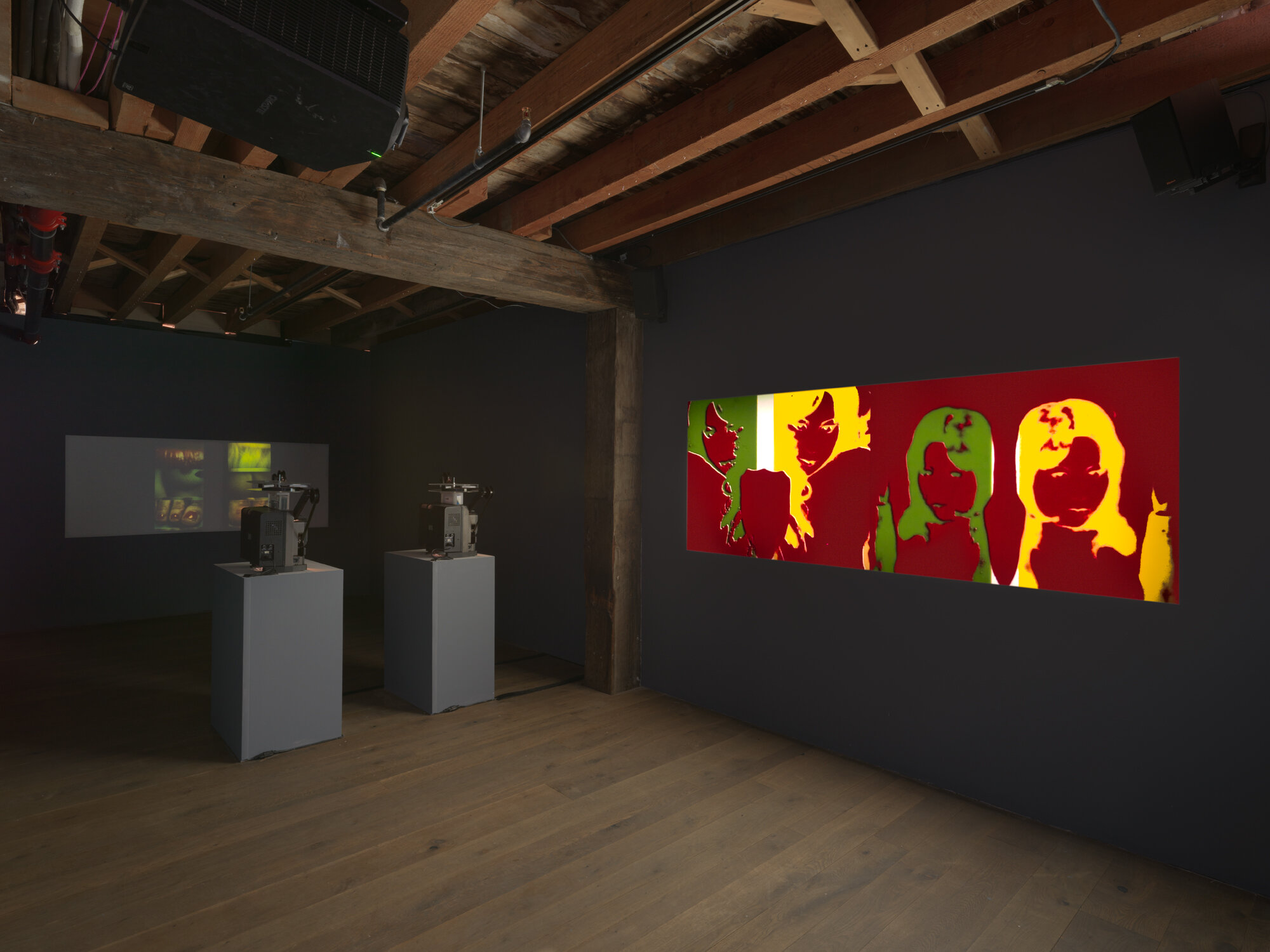Rikuro Miyai
rikuro miyai
Rikuro Miyai (b. 1940, Shimane) is an artist with a multidisciplinary practice. As a student at Waseda University, Miyai joined the Association of Documentary Filmmakers and was an active voice in documentary film criticism. By the mid-1960s, he began to regularly feature in popular weekly magazines as a model and cultural voice representing the hippie (fūten) phenomenon while he continued to write criticism for the film journals Eizo Geijutsu and Kikan Firumu. His own films brought together his critical interests in documentary and pop, which grew through his admiration of Andy Warhol, and culminated in his 1965 essay ‘The Pop-Cinema Approach to Phenomenological Documentary’ and his double-projection film performance Phenomenology of Zeitgeist (1968). Together with Shuzo Azuchi Gulliver, he presented his own films at jazz clubs, such as Pit Inn and Noa Noa, and participated in events such as Pull Event (1967) at Sogetsu Art Centre, Intermedia (1967) at Runami Gallery and ZONE (1968), organised by the Art Film Association in Kyoto. He began to design discotheques and bars, such as Killer Joe’s, Club Sharivari and Station ’70 in Tokyo and Space Delicious in Osaka, expanding his practice to incorporate environment design. He participated in the 1970 World Exposition in Osaka (Osaka Expo ’70) where he became one of only several artists who were able to stage a performance in the Mirror dome of the Pepsi Pavilion designed by E.A.T before its cancellation. Miyai was a founding member of Video Hiroba, a collective of early video artists in Japan, and the leader of Unit Pro, an independent film production unit set up in his apartment in Shinjuku, Tokyo. He has recently presented his performances at Tate Modern, International Film Festival Rotterdam, Art Institute of Chicago and Tokyo Photographic Art Museum.
宮井陸郎(1940年生、島根出身)、複数の表現領域で活動するアーティスト。早稲田大学学生時代、記録映画作家協会に入会、ドキュメンタリー映画批評を積極的に行う。 1960年代半まで、ヒッピー(フーテン)現象を代表するモデル兼文化人として、流行の週刊誌に定期的に登場するようになるが、その一方で、雑誌『映像芸術』、『季刊フィルム』にて映画批評を続ける。宮井自身の映画作品は、ドキュメンタリーとポップへの批判的関心を集約したもので、アンディ・ウォーホルへの敬愛を通じて培われた。その結果生まれたのが、1965年に書かれたエッセイ「現象学的ドキュメンタリーへのポップ・シネマ的アプローチ」と、フィルムを二重に投映した作品「時代精神の現象学」(1968 )である。シュウゾウ・アヅチ・ガリバーと共に「ピットイン」や「ノアノア」などジャズクラブで自らの作品を発表、草月アートセンターでの「プルイベント」(1967年)、ルナミギャラリー「インターメディア」(1967年)、また京都での映像芸術の会が主催した「ZONE」(1968年) といったイベントに参加。 さらに「キラージョーズ」、「クラブシャリヴァリ」、「ステーション70」(東京)や「スペースデリシャス」(大阪)などのディスコやバーのデザインを開始、環境デザインを取り入れ実践を拡げる。 1970年には大阪万博(大阪万博'70)に参加。E.A.T.がデザインしたペプシ館ミラードーム内で、予定されていたプログラムが途中キャンセルされる前にパフォーマンスを演じた数少ないアーティストの一人となる。日本における初期ビデオアーティスト集団「ビデオひろば」の創設メンバー、東京新宿の自宅アパートに設けたインディペンデント映画製作所「ユニットプロ」のリーダー。近年テート・モダン、ロッテルダム国際映画祭、シカゴ美術館、東京都写真美術館でパフォーマンスを上演。
Bio written by Julian Ross; Translated by YS




